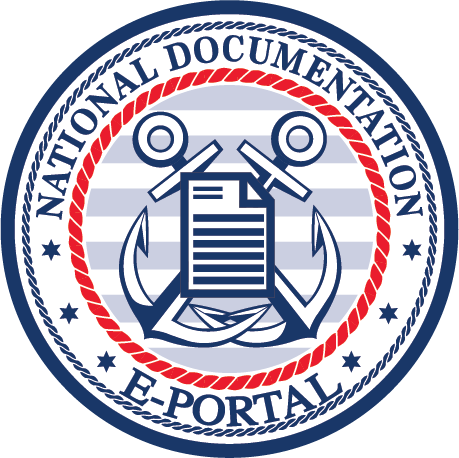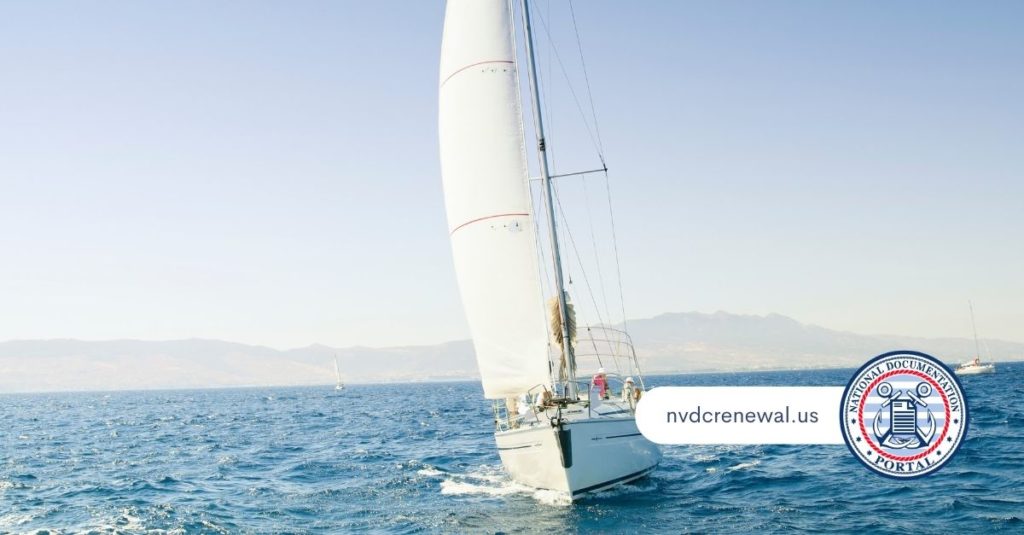No, a dinghy is generally not included in vessel documentation under Coast Guard regulations.

Vessel documentation covers only the primary vessel that is officially registered with the U.S. Coast Guard. Support craft like dinghies, tenders, or lifeboats are considered separate and are not reflected in the Certificate of Documentation.
When you use our service to manage your vessel documentation, we help clarify which items are included and how to address any special equipment or auxiliary craft.
Vessel Documentation Defined
Vessel documentation is a federal registry process managed by the U.S. Coast Guard, which applies only to principal vessels over five net tons. This documentation establishes the vessel’s legal identity, supports ownership claims, and enables use of U.S. flags. It does not extend to any auxiliary craft—such as dinghies, tenders, or liferafts—that may be aboard the vessel.
Our service walks you through the documentation process step by step, clarifying what is included. We explain distinctions like:
- Primary vessel that requires documentation.
- Auxiliary craft that are not part of the official registry.
- Requirements for commercial or recreational use endorsements.
We help ensure your documentation is properly submitted and renewed—and we clearly differentiate what is and isn’t covered.
Why Dinghies Are Excluded from Vessel Documentation
The U.S. Coast Guard’s system defines documentation eligibility based on the vessel’s net tonnage, nationality, ownership, and intended use. Dinghies, regardless of size or utility, lack their own documentation for several reasons:
- They don’t meet minimum net tonnage thresholds.
- They are considered equipment, not primary vessels.
- Their use is typically tied to the documented vessel and not commercial operations.
If you want to document a dinghy separately, you would need to treat it as a standalone vessel—meeting all criteria and paying the associated fees—something most dinghies do not qualify for.
We help you understand these rules, including references to the Code of Federal Regulations such as eCFR Title 46, part 67 for documentation standards. Our services ensure that only qualifying vessels are submitted, and that support craft remain appropriately excluded unless documentation is actually required.

When It Matters That Dinghies Aren’t Documented
Even though dinghies aren’t in the Certificate of Documentation, their existence can matter in a few key situations:
- Commercial endorsement applications where all vessels in the operation must be documented.
- Insurance filings that sometimes ask about auxiliary craft.
- Ownership transfers or sale of the documented vessel.
Our platform enables you to upload any acknowledgment or supplemental proof, if required, and includes support materials explaining that tenders aren’t part of official documentation. We build transparency into your documentation records so that insurance providers, buyers, or authorities understand what is and isn’t included.
What if You Want a Dinghy Independently Registered
If you’d like your dinghy to have official status separate from the mother vessel, it must comply with Coast Guard documentation rules on its own. That would require meeting the same net tonnage requirements and ownership criteria that apply to larger vessels—and paying separate documentation fees. Most dinghies don’t exceed 5 net tons, so the process is rare and usually unnecessary.
If this is something you need explored further—perhaps for commercial charter tenders or specific liability reasons—we can help determine eligibility and, if required, assist you with a separate documentation filing.
How Supporting Craft are Treated in Documentation Changes or Transfers
When transferring ownership of the documented vessel, the dinghy does not transfer automatically. You must specify whether it’s included in the sale or not, and typically that’s done through separate contractual terms. Vessel documentation only addresses the registered vessel, and tenders remain personal property that can be handled separately.
Our service helps you prepare the documentation needed for boating transactions and clarifies how to separate or include auxiliary equipment as desired.
Implications for Insurance and Regulatory Compliance
While the dinghy is not part of your official vessel documentation, insurance companies may still want to know its details—especially if it is motorized or used commercially. We can retrieve abstract of title documents and help you gather paperwork to satisfy compliance requirements without misrepresenting what is officially documented.
Our portal supports integration with insurance documentation, creating a comprehensive file that includes both USCG documentation for your vessel and supplemental equipment information.
How We Help with Vessel Documentation Including Auxiliary Craft
Our online platform handles:
- Initial documentation or renewal of your main vessel.
- Abstract of Title requests and documentation of any mortgages tied to the vessel.
By focusing on the principal vessel’s eligibility, our service eliminates confusion and ensures every aspect of your record is accurate.

Understanding the Federal Regulations Guiding Documentation
The federal rules for documentation—like ownership requirements, net tonnage minimums, and filing procedures—are detailed in the Code of Federal Regulations. For example, the eCFR Title 46, Part 67 outlines:
- Standards for documentation eligibility.
- Definitions and calculations affecting gross/net tonnage.
- Requirements for submission and endorsement.
We embed regulatory guidance in our platform so you don’t have to dig through legal language. When you apply through our site, you can be confident that all filings comply with federal guidelines.
What Happens to Dinghies When Your Documentation Changes
If your primary vessel’s documentation is updated—say through a name change, ownership transfer, or mortgage filing—it does not affect the dinghy. We can assist with:
- Resubmit of vessel Certificate of Documentation.
- Abstract of Title updates reflecting changes.
- Separate processes for dinghy sale or retention.
Our service ensures that vessel documentation stays accurate and consistent after updates, without accidentally including or excluding secondary craft.
Keeping Auxiliary Equipment in Good Standing
Even when not documented, logging information about your dinghy in your vessel files—such as purchase receipts, serial numbers, and photos—adds clarity. This proves handy during inspections, insurance claims, or port checks. We let you store these files alongside your official documentation, making it easier to demonstrate ownership or condition.
Simplifying Vessel Documentation Management with Us
Our goal is to remove complexity from vessel documentation. We clarify the difference between documented and non‑documented craft. Through our system you can:
- Apply for documentation and renewals.
- Update vessel details and endorsements.
- Order abstracts of title that highlight equipment records.
- Monitor regulatory requirements cited in eCFR Title 46, Part 67.
Dinghies and tenders are important but separate from your certified vessel record—and we help you manage both with organization and transparency.
Apply for Vessel Documentation Today
If you’re ready to document or renew your primary vessel, or need help organizing records for auxiliary craft like dinghies, our platform supports your needs from application to updates.
We guide you through compliance with the eCFR Title 46 requirements, such as those outlined in part 67, to ensure accurate documentation.
We maintain compliance with federal rules, provide supporting information for insurance and transfers, and keep your documentation accurate, accessible, and ready for any situation.

